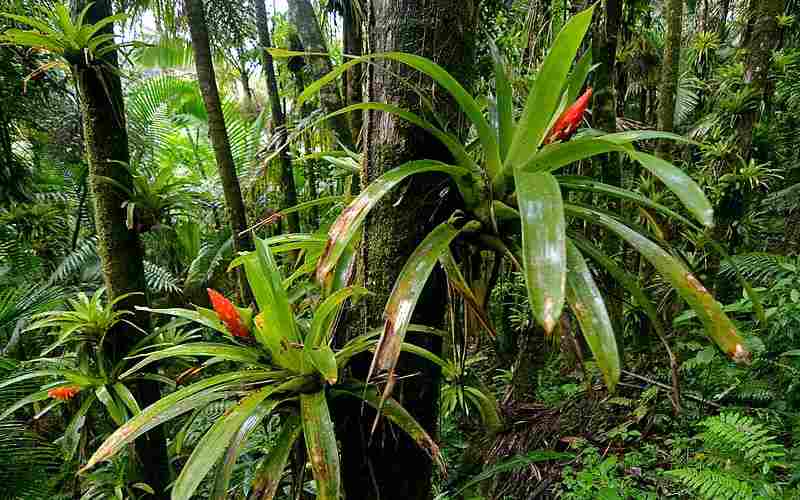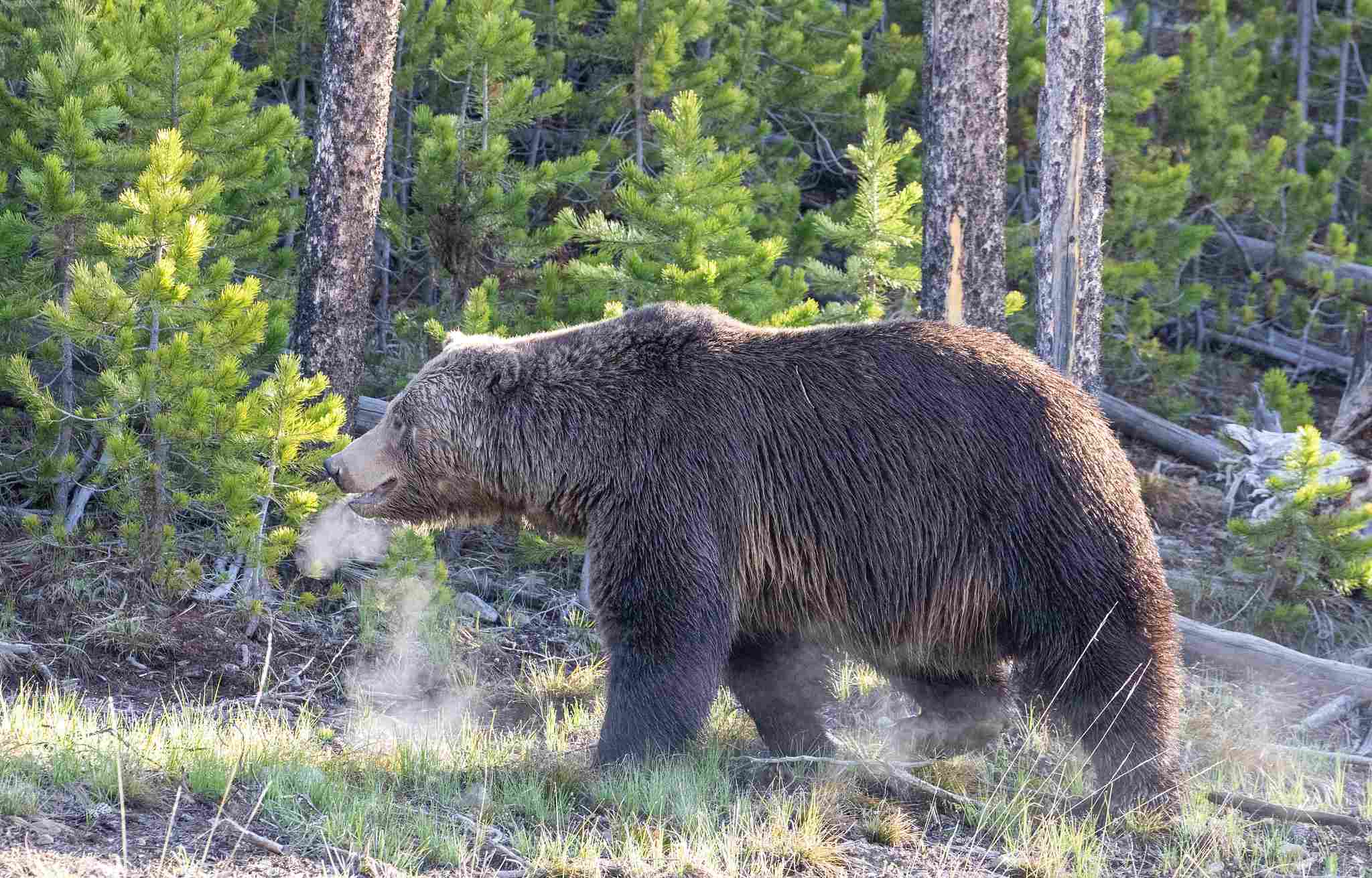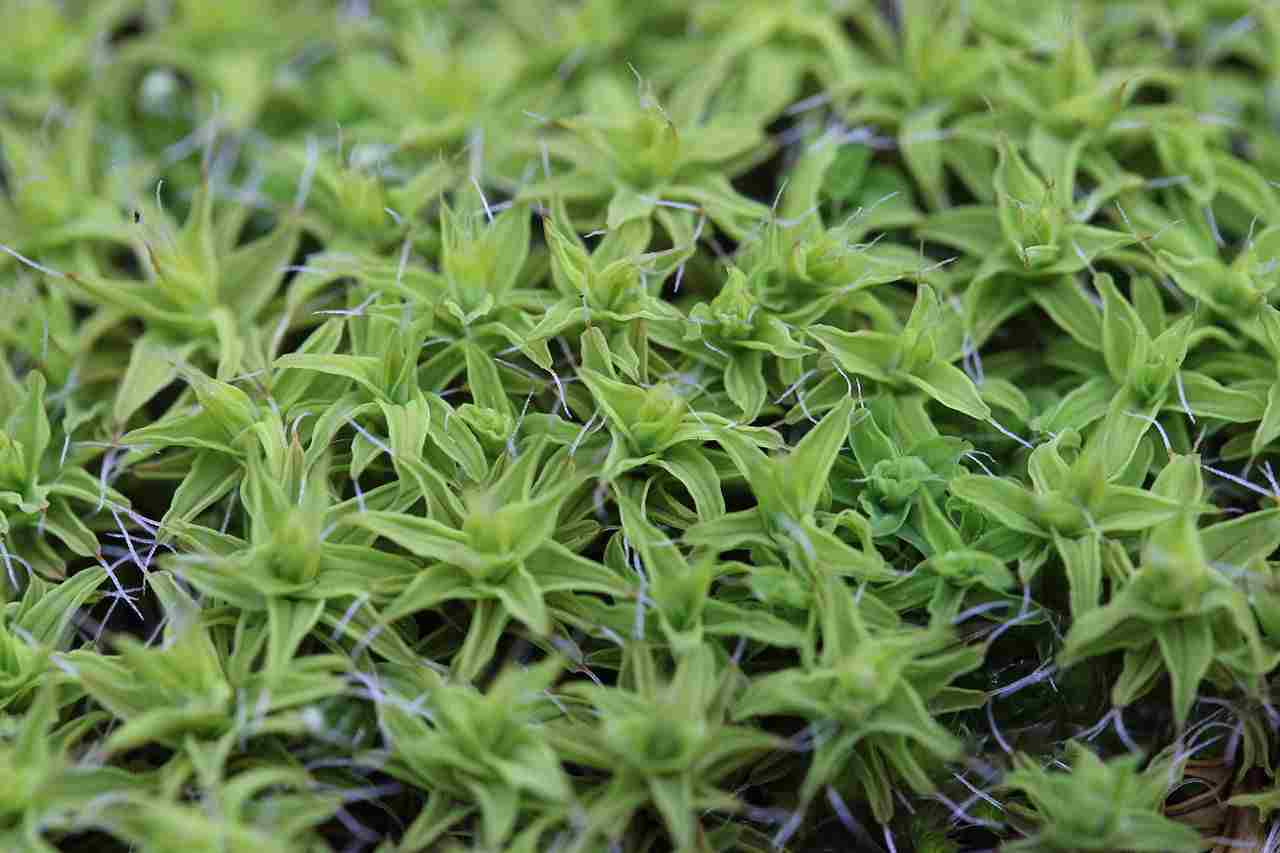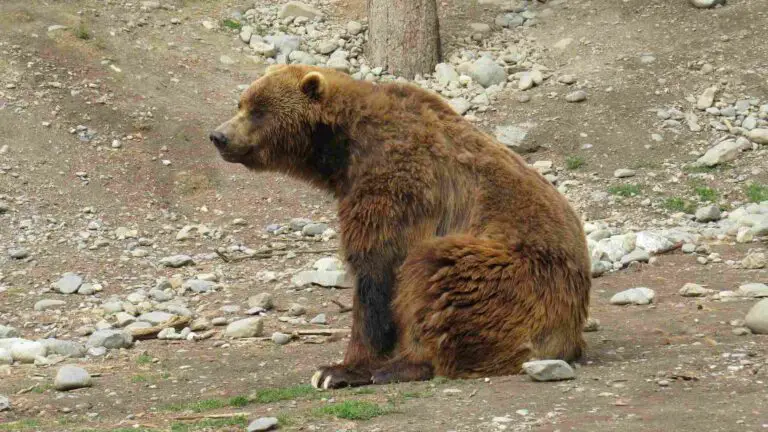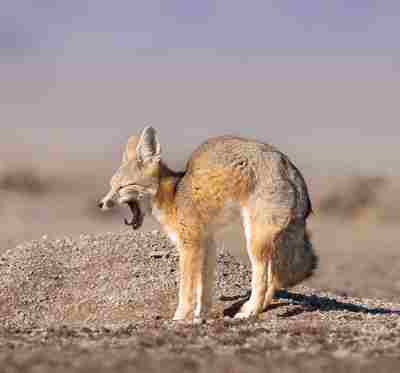15 Amazon Rainforest Biotic and Abiotic Factors Discussed
Amazon Rainforest biotic factors are; autotrophs, herbivores, carnivores, omnivores, decomposers, mutualism, commensalism, predation, and parasitism.
Amazon Rainforest abiotic factors are; air, light, water, sediments, rocks, and nutrients.
This article discusses Amazon Rainforest biotic and abiotic factors, as outlined below;
Amazon Rainforest Biotic Factors
Amazon Rainforest Abiotic Factors
-Amazon Rainforest Biotic Factors
1). Autotrophs: One of the Amazon Rainforest Biotic Factors
Autotrophs in the Amazon Rainforest play vital roles in sustaining the ecosystem through their unique functions. Examples of Amazon Rainforest autotrophs are; orchids, bromeliads, algae, mosses and liverworts.
Orchids and bromeliads, contribute to the forest's biodiversity by providing habitats for various species. The Brazil nut tree, an essential canopy species, not only produces valuable nuts but also supports diverse wildlife.
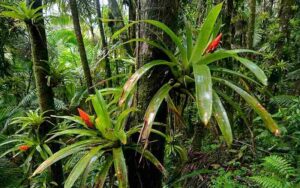
Algae, present in aquatic habitats within the forest, serve as primary producers, initiating the energy transfer sequence of the food chain. Moss and liverwort, often found on trees and forest floor, help in nutrient cycling and moisture retention. Collectively, these autotrophs contribute to the intricate network of life, ensuring the Amazon Rainforest's resilience and ecological sustainability.
2). Herbivores in the Amazon Rainforest and Their Functions
Examples of herbivores in the Amazon Rainforest include the tapir, capybara, agouti, sloth, grasshopper, squirrel, and yellow macaw. These organisms play essential roles in defining the characteristics of the ecosystem.
The tapir, with its diverse diet, acts as a seed disperser, helping maintain plant diversity by transporting seeds to different locations.
Capybaras, as social herbivores and primary consumers, help to control vegetation by grazing on plants and influencing plant composition.
Agoutis also contribute to seed dispersal through their habit of burying seeds, which can lead to new plant growth. Sloths, known for their slow movement, are important for maintaining canopy diversity by selectively feeding on leaves and buds.
Grasshoppers contribute to nutrient cycling through their feeding habits, while squirrels play a role in seed dispersal, aiding in the regeneration of rainforest tree species.
The yellow macaw, through its diet of fruits and nuts, helps disperse seeds and contributes to the forest's overall genetic diversity.
Collectively, these herbivores contribute to the ecological stability and resilience of the Amazon Rainforest by influencing plant dynamics, nutrient cycling, and the dispersal of seeds.
3). Carnivores: One of the Amazon Rainforest Biotic Factors
Carnivores in the Amazon Rainforest, including the giant anteater, armadillo, puma, jaguar, river otter, black caiman, and red-eyed tree frog; all have crucial roles to play in maintaining the ecological balance of the region.
The giant anteater and armadillo primarily feed on insects and larvae, controlling insect populations and influencing soil health.
The Amazon puma and jaguar, as apex predators, help regulate herbivore populations, preventing overgrazing and promoting biodiversity by controlling the numbers of prey species.
Jaguars, in particular, are apex predators that shape the structure of the entire ecosystem through their influence on prey adaptation and distribution.
River otters contribute to the aquatic ecosystem in the Amazon Rainforest, by controlling fish populations, and maintaining the biological activity of river systems. The black caiman, as a large predator, also regulates the population of aquatic species and contributes to the balance of the aquatic food web.
Tree frogs in the Amazon Rainforest feed on insects, other small invertebrates like worms, and small vertebrates in some cases. Their role in controlling insect populations contributes to overall ecosystem stability, by preventing unchecked herbivore damage to vegetation and influencing nutrient cycling.
Collectively, these carnivores are integral components of the Amazon Rainforest's complex network of life, influencing prey dynamics, preventing ecological imbalances, and contributing to the overall biological continuity and species richness of the ecosystem.
4). Omnivores in the Amazon Rainforest and Their Functions
Examples of omnivores in the Amazon Rainforest include the toucan, spider monkey, and tadpoles.
These organisms exhibit versatile feeding habits, contributing to the complexity and long-term resilience of the ecosystem. This section highlights some of their characteristics and functions;
The toucan, with its omnivorous diet consisting of fruits, insects, and other small animals, has an effective role to play in seed dispersal. By consuming a variety of fruits, the toucan aids in the distribution of seeds across different areas, thereby influencing plant diversity and regeneration.
Spider monkeys, being highly adaptable and opportunistic feeders, consume a diverse diet of fruits, nuts, insects, and small vertebrates. Their foraging habits contribute to the dispersion of seeds and influence the dynamics of plant communities. Additionally, the tree-dwelling nature of spider monkeys has a cascading effect on forest structure and composition.
Tadpoles feed on algae in the water bodies (such as ponds) in which they grow. They also consume plant materials, insects, and other invertebrates. It must be noted that omnivorous behavior may only occur during the tadpole stage, as adult frogs are often carnivorous.
Generally, omnivores in the Amazon Rainforest, including the toucan, spider monkey, and tree frog, contribute significantly to the forest's ecological dynamics by influencing seed dispersal, vegetation structure, and insect populations, ultimately playing a vital role in maintaining the health and biodiversity of the ecosystem.
5). Decomposers: One of the Amazon Rainforest Biotic Factors
Decomposers in the Amazon Rainforest, include microbes like fungi and bacteria, and detritivores like slugs, earthworms, termites, and leaf beetles.
These organisms are instrumental in breaking down organic matter and recycling nutrients, and play an indispensable role in the forest's nutrient cycling and ecological wellbeing. Below are more details;
Fungi and bacteria are primary decomposers, breaking down the remains of dead plants and animals into essential nutrients. They facilitate biodegradation and the release of nutrients back into the soil, enabling the growth of new vegetation and supporting the overall productivity of the ecosystem.
Slugs and earthworms are detritivores that contribute to decomposition by breaking down organic material physically and aiding in the formation of nutrient-rich soil. Their activities enhance soil structure and fertility, also promoting the growth of plants.
Termites are important detritivorous decomposers in the Amazon Rainforest, particularly in breaking down wood and plant material. Their activities contribute to the recycling of nutrients and have a role to play in shaping the forest floor structure.
Leaf beetles, through herbivory and detritivorous consumption of plant waste, participate in the breakdown of organic matter. Their activities influence nutrient cycling and contribute to the availability of resources for other organisms.
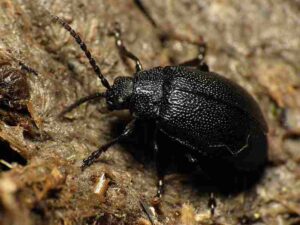
Collectively, these decomposers ensure the efficient and continuous recycling of nutrients, maintaining the health and sustainability of the Amazon Rainforest. Their activities contribute to the continuous renewal of the ecosystem, supporting the diverse life forms that inhabit this intricate environment.
6). Mutualism in the Amazon Rainforest and Its Functions
Mutualistic relationships in the Amazon Rainforest exemplify the interdependence between different species, and enhance the survival and prosperity of those involved.
Some notable examples of mutualism in the Amazon Rainforest occur between ants and certain plant species, angiosperms and pollinators, fungus and leafcutter ants, as well as cleaner shrimp and their aquatic hosts. Each example is discussed below;
Certain plant species in the Amazon, such as the Cecropia tree, provide specialized hollow structures for ants to inhabit. In return, the ants defend the tree against herbivores and may even clear away vegetation that competes with the host plant.
Various flowering plants in the Amazon, like orchids and bromeliads, rely on specific pollinators, such as bees, butterflies, and hummingbirds. In this mutualistic relationship, the plants provide nectar as a food reward, while the pollinators aid in the plant's reproduction by transferring pollen between flowers.
Myrmecophytes, or ant-plants, house ant colonies within their structures. The ants defend the plant from herbivores and may receive food and shelter in return. Examples include certain acacias like the bullhorn acacia (which shares a mutualistic relationship with Pseudomyrmex ferruginea ant species).
Leafcutter ants cultivate fungus as their primary food source. They harvest fresh vegetation, bring it to their nests, and use it to cultivate the fungus. In return, the fungus provides a nutrient-rich food source for the ants.
Cleaner fish and cleaner shrimp establish mutualistic relationships with larger organisms in the rivers of the Amazon. By removing parasites and dead tissue, the cleaners benefit from a food source, while the larger animals receive hygiene services.
These examples generally illustrate the complexity of the rainforest food web and its trophic relationships, where different species have evolved to depend on and support each other, contributing to the overall biodiversity and continuity of the ecosystem.
7). Commensalism in the Amazon Rainforest
Commensalism in the Amazon Rainforest entails interactions where one species benefits, and the other is neither significantly harmed nor aided. An example of commensalism in the Amazon Rainforest is a scenario where a frog seeks shelter under trees. This is discussed as follows;
In frogs' commensalistic relationship with shelter plants, the frogs benefit by finding refuge and protection from potential predators or adverse environmental conditions beneath the trees.
The tree, on the other hand, is not directly affected by the presence of the frog. While the frog gains shelter, the tree remains unaffected in terms of fitness or resources.
Commensal relationships like this highlight the adaptability of species to coexist and utilize the resources available in the rainforest environment. In this case, the frog takes advantage of the shelter provided by the trees without exerting any noticeable impact on the trees themselves. These subtle interactions contribute to the complexity and stability of the Amazon Rainforest ecosystem.
8). Predation: One of the Amazon Rainforest Biotic Factors
Predation has a crucial role to play in the Amazon Rainforest, as it influences population dynamics, species interactions, and ecosystem structure.
Some examples of predation in the Amazon Rainforest include the relations between jaguars and herbivores, harpy eagles and sloths/rodents, snakes and amphibians, among others. Below is an outline of examples of Amazon Rainforest predators with some detail regarding their predatory behavior;
1. Jaguar and Puma
Carnivorous apex predators like jaguars and pumas are instrumental for controlling herbivore and omnivore populations. Their presence helps prevent overgrazing, ensuring a more balanced distribution of autotrophic species and contributing to overall ecosystem productivity.
2. Raptors
Predatory birds such as harpy eagles and hawks help to regulate the populations of smaller animals like rodents and reptiles. This control prevents unchecked population growth, which could otherwise have cascading effects on vegetation and other fauna.
3. Snakes
Both venomous and non-venomous snakes have a vital role to play in controlling the populations of various prey species, including mammals, other reptiles, and amphibians. Their predatory activities help maintain a state of balance among different trophic levels in the rainforest.
4. Predatory Fish
Predatory fish species, such as piranhas and catfish, help to control the abundance of smaller fish and aquatic invertebrates like crustaceans. This regulation ensures the stability of aquatic ecosystems and the health of the Amazon river and other regional water bodies.
5. Insectivores
Predatory insects, including spiders and ants, as well as non-insect insectivores like amphibians (including tree frogs), contribute to the control of insect populations. This regulation is crucial for preventing outbreaks that could otherwise impact plants and other invertebrates.

Predation in the Amazon Rainforest is not solely about controlling populations but also about shaping behaviors, distribution patterns, and adaptations within the ecosystem. The presence of predators contributes to the intricate web of interactions that define the rainforest's biodiversity and ecological balance. It underscores the importance of maintaining healthy predator-prey relationships for the overall well-being of this remarkable ecosystem.
9). Parasitism in the Amazon Rainforest and Its Functions
Parasitism in the Amazon Rainforest serves as a significant ecological process, by influencing species interactions, promoting organic diversity, and contributing to the dynamic equilibrium of the ecosystem.
An example of parasitism in the Amazon Rainforest is the relationship between the strangler fig and its host tree.
The strangler fig, a parasitic plant, typically begins its life by germinating in the canopy of a host tree. Its extensive roots grow downward, enveloping the host tree. Over time, the strangler fig's roots thicken, forming a dense lattice around the host, which eventually restricts its access to sunlight, nutrients, and atmospheric gases.
While the strangler fig benefits by using the host tree for support and initial nutrients, the host tree is eventually overwhelmed and may succumb to the competition for resources.
The importance of parasitism in this context lies in the ecological niche it creates. The strangler fig exploits a vertical space within the forest, utilizing the host tree as a scaffolding for its growth. As the host tree weakens or dies, gaps in the canopy are formed, creating opportunities for other plant species to establish themselves. This process contributes to the overall diversity of the rainforest by supporting the growth of a mosaic of vegetation at different heights and life stages.
Beyond the strangler fig, other examples of parasitism in the Amazon Rainforest involve various fungi, insects, and other plants that engage in parasitic relationships with different host species. These interactions influence the distribution, abundance, and diversity of species, contributing to the resilience and complexity of the Amazon Rainforest ecosystem.
-Amazon Rainforest Abiotic Factors
1). Air: One of the Amazon Rainforest Abiotic Factors
The air in the Amazon Rainforest is very critical in supporting the complex ecosystem and maintaining the overall health of this biome.
While often overlooked, air contributes to various functions that are essential for the survival of the diverse flora and fauna in this complex environment.
Air as an abiotic factor in the Amazon Rainforest, can be discussed within various contexts that include its key components, such as oxygen and carbon dioxide; and its functions, such as moisture regulation, temperature regulation, nutrient cycling, pollination, dispersal of seeds and spores, and facilitation of biotic interactions. The outline below provides more detail;
One of the primary functions of the air in the Amazon Rainforest is the supply of oxygen; whose production occurs through photosynthesis in autotrophs. The dense vegetation, including countless trees and plants, releases oxygen into the atmosphere as a byproduct of the photosynthetic process. This process not only sustains the diverse array of life within the rainforest but also contributes to the global oxygen cycle.
The rainforest's vegetation, especially its expansive array of trees, has a vital role to play in absorbing carbon dioxide from the air. Through photosynthesis, plants convert carbon dioxide into organic compounds, helping regulate atmospheric CO2 levels. These plants contribute to mitigating the impacts of climate change by collectively functioning as a carbon sink.
The air in the Amazon Rainforest plays a definitive role in moisture regulation. The vast expanse of the forest releases water vapor through transpiration and evaporation. This process contributes to the formation of clouds and influences precipitation patterns, maintaining the high humidity levels essential for the rainforest's dense vegetation.
Air in the Amazon Rainforest helps regulate temperatures by influencing factors such as humidity and cloud cover. The canopy of the forest provides shade, preventing excessive heating and contributing to a relatively stable microclimate by restricting the exchange of air with the external environment. This temperature regulation is important for the survival of the diverse flora and fauna adapted to the rainforest environment.
Airborne particles, including dust and pollen, contribute to nutrient cycling in the rainforest. These particles can contain essential minerals and nutrients that are transported by the wind. When deposited on the forest floor, they become part of the nutrient cycle, sustaining the growth of plants and supporting the overall ecosystem.
The air facilitates the process of pollination, enabling the transfer of pollen between flowers. Numerous species of plants in the Amazon Rainforest rely on the wind for pollination. Additionally, insects and birds move through the air, contributing to cross-pollination and the reproductive success of many plant species.
Air (in the form of wind) is a key element in the dispersal of seeds and spores in the rainforest. Wind energy plays an effective role in carrying seeds away from parent plants, promoting the establishment of new vegetation in different locations. This dispersal mechanism contributes to the biodiversity and regeneration of the rainforest.
Lastly, air facilitates various biotic interactions among organisms in the rainforest. Birds, insects, and other animals use the air to navigate through the dense vegetation, find food, and communicate. Airborne chemicals, such as pheromones, play a role in signaling and interactions between different species.
As shown in the discussion above, air in the Amazon Rainforest is not merely an empty space but a dynamic component that supports life through oxygen production, carbon dioxide absorption, moisture and temperature regulation, nutrient cycling, pollination, seed dispersal, and various biotic interactions.
Understanding the functions of the air in the rainforest is important in any analysis of the interconnectivity, of both abiotic and biotic factors, that sustains this distinctive biome.
2). Light in the Amazon Rainforest
Light is a critical abiotic factor in the Amazon Rainforest, which has a fundamental role to play in the growth, development, and functioning of its diverse ecosystems.
The rainforest's unique structure, with a dense canopy and multiple layers of vegetation, influences how light penetrates and interacts with the environment.
Some key functions of light in the Amazon Rainforest include; photosynthesis, canopy stratification, temperature regulation, plant growth, pollination and reproduction, facilitation of animal adaptation and activity, and creation of microhabitats.
Light is essential for photosynthesis, which is a process whereby plants convert light energy from the sun into chemical energy stored in their tissues/biomass. The Amazon Rainforest is home to an immense diversity of plant species, ranging from large trees to smaller understory plants. These plants capture sunlight through their leaves and use it to synthesize organic compounds, producing oxygen as a byproduct. Photosynthesis is the basis of the rainforest's energy flow and supports its vast food web.
The rainforest's canopy is stratified into layers, each with varying levels of light availability. The emergent layer, upper canopy, understory, and forest floor experience different intensities and qualities of light. This stratification allows for a broad range of plant and animal species to coexist, each group being adapted to specific light conditions.
Sunlight is accompanied by solar infrared radiation, which influences temperature in the Amazon Rainforest. The absorption of solar radiation by the forest canopy and the ground contributes to the region's overall climate. The dense vegetation provides shade, preventing excessive heating, and helps maintain a relatively stable microclimate. This temperature regulation is crucial for the survival of the rainforest's diverse flora and fauna.
Light availability is a key factor influencing seed germination and the growth of young plants. Some plant species in the Amazon Rainforest have specific light requirements for germination, and others are adapted to grow in low light conditions of the understory. Light also determines the distribution and success of different plant species, influencing the structure and composition of the forest.
Also, light has a role to play in the timing and synchronization of flowering in the rainforest. Many plants rely on cues from sunlight to determine when to produce flowers and release pollen. The availability of light influences the activity patterns of pollinators, such as bees and butterflies, contributing to successful reproduction for many plant species.
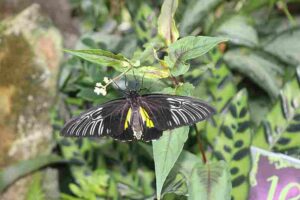
Light directly influences the behavior and movement of animals in the Amazon Rainforest. Diurnal species, active during the day, are adapted to the patterns of sunlight, while nocturnal species are adapted to low-light conditions. Light availability also influences mating displays, foraging behavior, and the overall ecological interactions among different animal species.
The quality and quantity of light affect the production and regulation of photosynthetic pigments in plant cells. Chlorophyll, the primary pigment involved in photosynthesis, absorbs light in specific wavelengths. Plants have adapted to the available light spectrum in their respective layers of the canopy, optimizing their ability to capture sunlight for photosynthesis.
Lastly, variations in light levels create diverse microhabitats within the rainforest. The emergence of gaps in the canopy, whether due to fallen trees or natural tree-fall events, allows for different plant species to thrive in the increased sunlight. These microhabitats contribute to the overall biodiversity of the rainforest.
In general, light in the Amazon Rainforest can be described as a multifaceted factor influencing the energy dynamics, biodiversity, and ecological interactions within this vast biome. Understanding the ecological functions of light is an important step for evaluating the complex adaptations and interdependencies that characterize life in the Amazon Rainforest.
3). Water: One of the Amazon Rainforest Abiotic Factors
Water is another vital component of the Amazon Rainforest, playing a central role in defining its conditions, supporting diverse life forms, and influencing various ecological processes.
The rainforest's hydrological cycle, which is characterized by abundant rainfall, rivers, and intricate waterways, contributes to the biome's resilience and diversity.
Some key functions of water in the Amazon Rainforest include hydrological cycling, nutrient cycling, support of aquatic biodiversity, sediment transport, facilitation of plant growth, and temperature regulation. Amazon water resources also contribute to the sustenance of regional human populations, and serve as a transport medium.
The Amazon Rainforest or Amazonia, is the world's largest river basin, so that its hydrological cycle is a critical component of the Earth's water cycle. Evaporation from the Atlantic Ocean contributes moisture to the atmosphere, and prevailing winds bring this moisture over the rainforest, resulting in heavy rainfall. The rainforest's dense vegetation transpires water, releasing it back into the atmosphere, completing the cycle.
Intense and frequent precipitation in the Amazon Rainforest contributes to nutrient cycling in the ecosystem. Rainfall washes nutrients from the canopy and vegetation to the forest floor, replenishing the soil. This process is crucial for the growth of plants, supporting the rich biodiversity of the rainforest.
The Amazon River and its tributaries create an extensive network of river systems that permeate the rainforest. These rivers are essential for the transportation of nutrients, sediments, and organic matter, influencing the distribution and abundance of both terrestrial aquatic species. Riverbanks and floodplains provide unique habitats, contributing to the high biodiversity of the region.
The waterways in the Amazon Rainforest support diverse aquatic ecosystems, which rivers, lakes, and wetlands. These ecosystems are home to a vast array of fish, amphibians, reptiles, and invertebrates. The seasonal flooding of certain zones creates dynamic habitats that foster breeding, feeding, and migration for many species.
During the wet season, rivers usually overflow onto floodplains, depositing nutrient-rich sediments. This flooding is essential for the fertility of the soil and the growth of vegetation. Nutrient-rich floodplains support the development of plant species, contributing to the overall health and productivity of the rainforest.
Water is an important resource for the growth and survival of the rainforest's extensive vegetation. The abundant rainfall provides moisture for the roots of trees, plants, and epiphytes. Trees in the rainforest canopies, for instance, capture water from rain and mist, supporting their growth and photosynthetic activities.
The evaporation of water from the rainforest contributes to temperature regulation. As water vapor rises, it absorbs heat energy, and helps to cool the air. This process plays a role in maintaining the rainforest's relatively stable and humid microclimate, which is essential for the survival of its diverse flora and fauna.
Water bodies in the Amazon Rainforest serve as habitats for numerous species and also act as migration routes for certain animals. Fish, amphibians, and reptiles navigate the rivers and streams, contributing to the overall biodiversity and ecological dynamics of the rainforest.
Lastly, water is vital for the livelihoods of human communities living in and around the Amazon Rainforest. Rivers are used for transportation, fishing, as well as agriculture. Additionally, water bodies hold cultural significance for indigenous communities, and has a central role to play in various rituals, traditions, and daily life activities.
The above discussion implies that water is a cornerstone of the Amazon Rainforest's ecological functioning, influencing climate, nutrient cycling, biodiversity, and human interactions. The intricate interplay of water with other elements of the rainforest contributes to the resilience and complexity of this extraordinary biome.
4). Sediments in the Amazon Rainforest
Sediments have a crucial role to play in the Amazon Rainforest's ecosystem, which includes defining the landscape, influencing nutrient cycling, and contributing to the overall biodiversity of the region.
The sedimentary processes are closely linked to the hydrological dynamics of the Amazon River and its tributaries.
Key functions of sediments in the Amazon Rainforest include; nutrient transport, soil fertility, support of floodplain agriculture, aquatic habitat creation, natural filtration, carbon storage, and support of riparian vegetation.
Sediments in river systems act as carriers for essential nutrients. During the wet season, rivers in the Amazon overflow onto floodplains, transporting sediment-rich water. The deposition of sediments on floodplains enriches the soil with nutrients, promoting the growth of vegetation and supporting the rainforest's high biodiversity.
Sediments contribute to the composition and fertility of the soil in the Amazon Rainforest. The periodic flooding of rivers deposits sediments containing minerals and organic matter onto the forest floor. This process replenishes the nutrients in the soil, creating conditions conducive to the growth of a wide variety of plant species.
The nutrient-rich sediments deposited on floodplains create fertile conditions suitable for agriculture. Indigenous communities and local populations often engage in floodplain agriculture, taking advantage of the natural fertility provided by sediment deposition for growing crops like rice, fruits, and vegetables.
Sediments influence the formation of aquatic habitats in rivers and lakes. The deposition of sediments creates diverse bottom substrates, providing habitats for various aquatic organisms, including fish, invertebrates, and amphibians. The complex underwater landscape contributes to the organic diversity of the Amazon's aquatic ecosystems.
Sediments have a key role to play in shaping the dynamics of floodplains. As rivers overflow during the wet season, sediments are deposited on the floodplains, creating new landforms and altering the topography. This process influences the spatial distribution of vegetation and contributes to the overall ecological diversity of the rainforest.
Also, sediments influence the processes of soil erosion and deposition along riverbanks, contributing to changes in river morphology. The movement of sediments within rivers helps shape the course of waterways, creating meanders, sandbars, and other features. These dynamic processes contribute to the intricate network of waterways in the Amazon Rainforest.
Sediments in river systems can act as natural water filtration systems, trapping and removing particles and pollutants from the water. This filtration process helps maintain water quality, ensuring that aquatic ecosystems and the organisms within them have access to relatively clean and suitable water conditions.
In the Amazon River and its tributaries, sediments serve as important carbon sinks. Organic matter, including plant debris and algae, accumulates in sediments over time. This carbon storage has implications for the global carbon cycle and contributes to the rainforest's role in climate regulation.
Sediments contribute to the stability and fertility of riparian zones along riverbanks. The deposition of sediments provides a substrate for the growth of vegetation, including trees, shrubs, and herbaceous plants. This vegetation, in turn, helps prevent soil erosion and contributes to the overall health of riverine ecosystems.

In general, sediments within the Amazon Rainforest are integral to the functioning of its ecosystems. From influencing nutrient cycling and soil fertility to shaping floodplains and supporting aquatic habitats, sediments contribute to the dynamic and diverse nature of this remarkable biome. The role of sediments is important toward the interconnected processes that sustain life in the Amazon Rainforest.
5). Rocks: One of the Amazon Rainforest Abiotic Factors
Rocks can be described as foundational elements in the Amazon Rainforest, contributing to the region's geology, landscape, and ecosystem dynamics.
While they may not be as immediately conspicuous as other abiotic features, rocks have essential roles to play in defining the geographic and ecological characteristics of the rainforest.
Key functions of rocks in the Amazon Rainforest include their contributions to geological configuration, soil formation, erosion control, aquatic habitat diversity, river morphology determination, mineral dynamics, geomorphic processes, and landform features. These are discussed below;
The types of rocks present in the Amazon Rainforest influence the region's geological composition. The Amazon basin comprises various geological formations, including sedimentary, igneous, and metamorphic rocks. Understanding the geological diversity is crucial for comprehending the nutrient content, water retention, and other soil properties that influence plant growth.
Rocks contribute to the formation of soils in the Amazon Rainforest. Weathering of rocks, a process influenced by factors like temperature, humidity, and vegetation, breaks down rocks into smaller particles. This weathering process produces the mineral components of soils, influencing soil fertility and nutrient availability for plant growth.
Certain types and forms of rocks, such as large igneous boulders and bedrock outcrops, can act as natural barriers against soil erosion. They help stabilize slopes and prevent the washing away of soil during heavy rainfall. This erosion control is essential for maintaining the integrity of riverbanks, hillsides, and other terrain features.
Rocks submerged in rivers and streams contribute to the creation of diverse aquatic habitats. The complex underwater landscape formed by rocks provides shelter, breeding sites, and foraging grounds for various aquatic species, including fish and invertebrates. The interplay between rocks and water therefore shapes the biodiversity of Amazonian waterways.
Rocks contribute to the creation of microhabitats within the rainforest. Small rock formations or crevices can provide shelter for certain plant species, insects, and other organisms. The microhabitats created by rocks contribute to the overall biodiversity by offering niches for specialized flora and fauna.
Rocks influence the morphology of rivers and streams in the Amazon Rainforest. Large rocks and boulders can create rapids, waterfalls, and other features that affect the flow and course of waterways. These variations in river morphology contribute to the diversity of aquatic ecosystems.
Effects of weathering of rocks include the release of minerals into the soil, contributing to the nutrient cycling processes in the rainforest. Essential minerals, such as calcium, potassium, and phosphorus, are sourced from rocks and become available to plants. This mineral cycling is crucial for the growth and health of the diverse vegetation in the Amazon.
Rocks are involved in various geomorphic processes that shape the landscape. For example, the dissolution of limestone rocks can lead to the formation of caves and sinkholes. These geological features create unique habitats and contribute to the overall topographical diversity of the rainforest.
Also, rocks contribute to the formation of distinct landform features in the Amazon Rainforest, including hills, ridges, and plateaus. These landforms influence water drainage patterns, microclimates, and the distribution of plant and animal species. The varied topography created by rocks contributes to the heterogeneity of the rainforest environment.
In general, rocks in the Amazon Rainforest serve as integral abiotic components of the ecosystem, influencing soil formation, erosion control, aquatic habitats, and the overall geomorphology of the region. Their functions are deeply intertwined with the dynamic processes that sustain the biodiversity and ecological health of this remarkable biome.
6). Nutrients in the Amazon Rainforest
Nutrients in the Amazon Rainforest are essential elements which support the growth and functioning of the diverse flora and fauna within this vast ecosystem.
The rainforest's complex nutrient cycling processes involve interactions between the soil, vegetation, water, and various organisms.
Some important nutrients in the Amazon Rainforest are nitrogen, phosphorus; potassium. calcium, magnesium, and sulfur. Their functions and sources, alongside others; are individually discussed as follows;
1. Nitrogen (N)
In terms of its function(s), nitrogen is a crucial component of proteins, nucleic acids, and chlorophyll in plants. It plays a vital role in plant growth, photosynthesis, and overall metabolism.
Nitrogen is obtained from the atmosphere through nitrogen-fixing bacteria in the soil and through organic matter decomposition.
2. Phosphorus (P)
Phosphorus is involved in energy transfer processes, DNA and RNA synthesis, and the formation of ATP (adenosine triphosphate). It is essential for root development and flowering in plants.
This element is released through the weathering of rocks and minerals and is also present in organic matter.
3. Potassium (K)
Potassium is crucial for enzyme activation, photosynthesis, and the regulation of water uptake and transpiration in plants. It contributes to overall plant vigor and stress tolerance.
Sources of potassium include weathering rocks, and decomposing organic matter.
4. Calcium (Ca)
Calcium serves as a structural component of cell walls in plants. It is essential for cell division, cell elongation, and the activation of certain enzymes. Calcium also plays a role in neutralizing acidic soils.
In terms of its sources, calcium can be derived from weathering limestone rocks and minerals.
5. Magnesium (Mg)
Magnesium is a central component of chlorophyll, which is the pigment responsible for photosynthesis. It is also involved in enzyme activation and the transfer of phosphate groups in ATP.
Also, magnesium is obtained from the weathering of minerals and is present in organic matter.
6. Sulfur (S)
Sulfur is a component of amino acids, proteins, and vitamins. It is essential for plant metabolism, enzyme activation, and the synthesis of certain secondary metabolites.
Sources of sulfur in the Amazon Rainforest include organic matter and atmospheric deposition.
7. Trace Elements (like Iron, Zinc, Copper)
Trace elements play essential roles as cofactors in enzymatic reactions. Iron, for example, is crucial for chlorophyll formation, while zinc and copper are involved in various metabolic processes.
These elements are obtained from weathering rocks, and are also present in organic matter.
8. Carbon (C)
Carbon is the backbone of organic molecules, which include carbohydrates, proteins, lipids, and nucleic acids. It is essential for plant growth and energy storage.
The process by which atmospheric carbon is obtained by forest organisms is photosynthesis, where plants convert carbon dioxide from the atmosphere into organic compounds.
9. Oxygen (O)
Oxygen is essential for respiration, where it is used to break down organic molecules to release energy. It is also involved in various metabolic processes in plants and animals.
Generally, oxygen is obtained from the atmosphere, and is a byproduct of photosynthesis.
10. Hydrogen (H)
Hydrogen is a component of organic molecules, playing a role in the structure of carbohydrates, proteins, and lipids. It is involved in various metabolic reactions.
Hydrogen is obtained from water and is an essential component of organic matter.
*Dynamics and Functions of Nutrients in the Amazon Rainforest
The importance of nutrients in the Amazon Rainforest can be cited within various contexts, which include; biogeochemical cycling, biodiversity support, climatic regulation, and contribution to ecosystem resilience.
Nutrients in the Amazon Rainforest are cycled through various processes, including decomposition, nutrient uptake by plants, and nutrient release through weathering. This cycling maintains the overall nutrient balance in the ecosystem.
Adequate nutrient availability is required to support a diverse array of plant species, which in turn provide essential resources for a broad range of animals. Nutrient-rich soils contribute to the high biodiversity observed in the Amazon Rainforest.
The cycling of carbon, which is part of the Amazon Rainforest's nutrient pool, contributes to carbon sequestration in the rainforest. Plants store carbon in their biomass, helping mitigate the impacts of climate change.
Nutrients contribute to the resilience of the ecosystem by supporting the health and vitality of plants. This, in turn, influences the stability and adaptability of the entire rainforest ecosystem.
From the discussion so far, it can be deduced that nutrients are fundamental to the functioning of the Amazon Rainforest, supporting the growth, metabolism, and diversity of its complex web of life. The interplay of these nutrients in the soil, water, and vegetation is a critical dynamic for sustaining the ecological health and productivity of the rainforest biome.
Conclusion
Amazon Rainforest biotic factors are;
Autotrophs
Herbivores
Carnivores
Omnivores
Decomposers
Mutualism
Commensalism
Predation
Parasitism
Amazon Rainforest abiotic factors are;
Air
Light
Water
Sediments
Rocks
Nutrients
